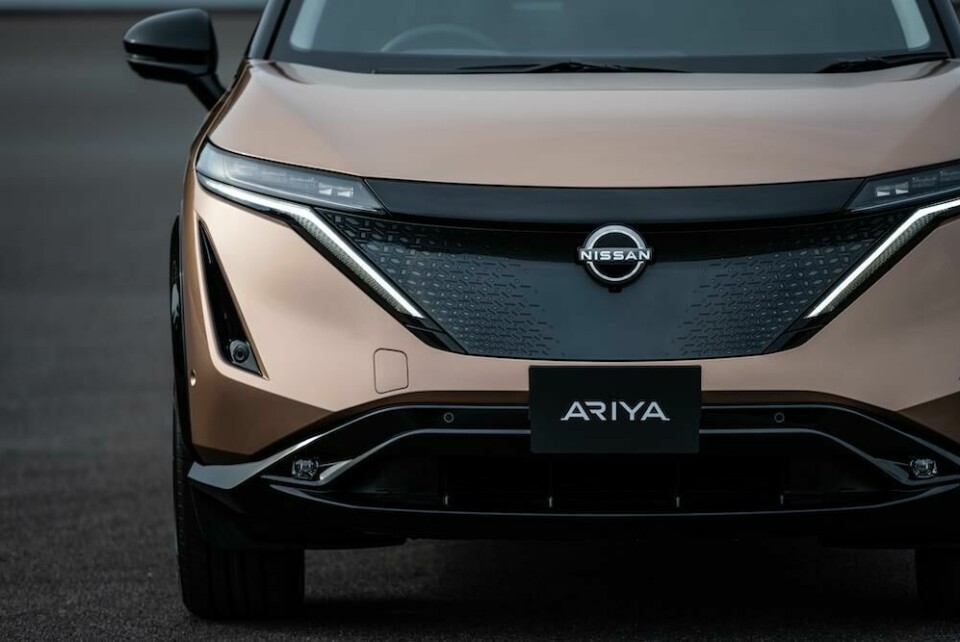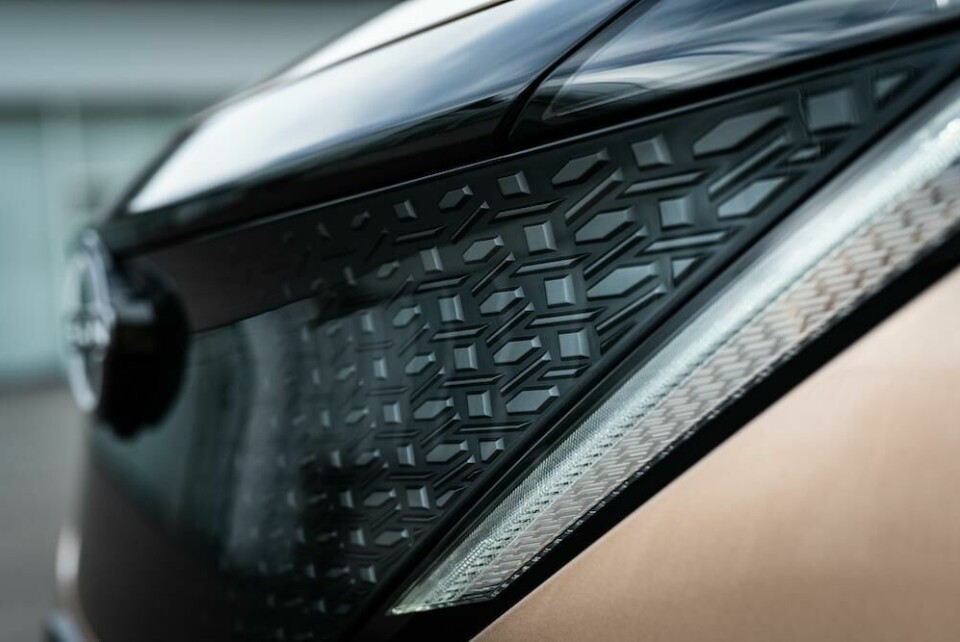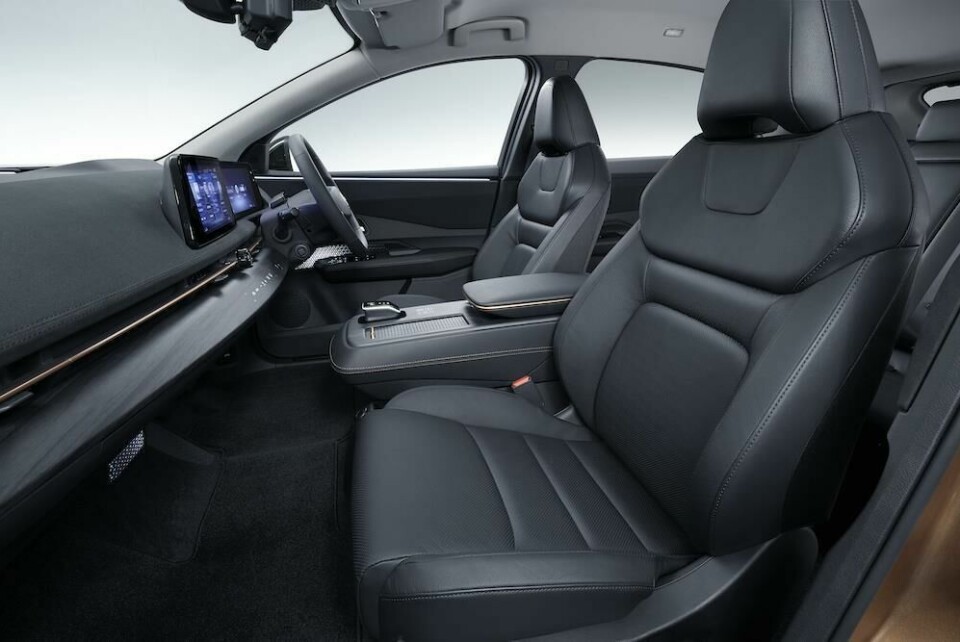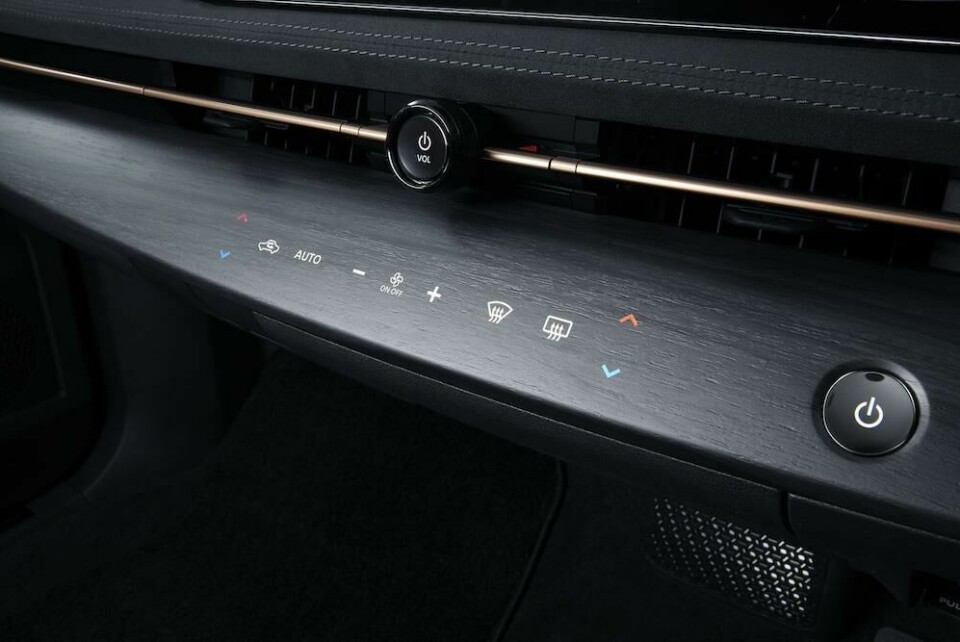
Nissan enters new design era with the Ariya
The new Ariya marks an important step for Nissan in its design direction for electric production models
Nissan has unveiled the production version of the Ariya – its first all-electric crossover SUV. Both the exterior and interior look to be true to concept.
The Ariya concept was shown at the 2019 Tokyo Motor Show alongside the IMk concept. Although they were very different in size and shape, both concepts were centred upon Nissan’s new design philosphy titled Timeless Japanese Futurism.
Exterior
As it is an EV, the Ariya doesn’t need a conventional grille to suck in air for an engine. Instead, the area has maintained a grille-like shape, but Nissan calls it a ‘shield’. This is due to the fact that it houses and protects the sensors used for ProPILOT.
“This shield is closed off for aero,” Matthew Weaver, vice president of Nissan Design Europe, tells CDN. ”And behind the shield we have placed all the radar, lidar and cameras. It is contoured and finished with what we call the electrified V-motion. Now, as we move towards our EV era, the V-motion reflects the aero design.”

The shield incorporates a 3D texture inspired by the traditional Japanese ’kumiko’ pattern. The lower section is bordered by a thin light strip, while the upper section is topped by a black lip that separates the shield from the bonnet and connects the two thin LED headlamps.
The lower bumped pushes up to meet the shield, and creates a distinctive shape in the surrounding bodywork. There are two triangular-shaped areas beneath the headlamps that house more sensors.
The side of the Ariya is void of sharp grooves. Instead, there is a distinct curvature that works to beef-up the rear of the vehicle while simultaneously pinching the front end to enhance aerodynamics.
The rear is characterised by the reflector strip that runs the width of the car and connects the two lights, which sit high on the bodywork just beneath the rear window. The reflector also has a thin red line embedded inside that is illuminated whenever the Ariya is running. The rear fender flares are prevelant and, combined with the position of the lights, produce a chunky appearance for the back end.
Interior
The interior of the Ariya is inspired by the Japanese concept of ‘ma’, which has been described as a pause in time, an interval or emptiness in space. Surfaces are sleek and minimal. “We want to present the technology we have to the customer in a very easy-to-digest and clean way. That’s why there are hardly any buttons,” Weaver confirms.

The dash is made up of three layers, with the top section housing the all-in-one screen which includes both the driver information and infotainment. The section also includes a thin lighting strip that sweeps around the top of the sill and beyond the A-pillars, continuing along the top of the doors to achieve an enveloping cockpit feel.
The middle part of the dash is thin and has another light strip that runs from door to door. The round volume button sits at the centre, and it also includes air vents.
Most of the controls are on the lower section of the dash, which provides subtle character to the interior with its wooden finish. These controls come in the form of engraved haptic switches that light up and vibrate when touched.

The same wooden finish and engraved haptic switches are used on the centre console, but there is also a separate haptic shifter for changing drive modes that has been shaped to fit the palm of the hand.
To create a sense of fluidity, another Japanese shape called ‘andon’ is used inside on parts of the door and on the pedals. However, these sections are small and, again, rather subtle. The interior as a whole retains this subtly, with each element carefully chosen and crafted with a gentle minimalist touch.
Summary
Nissan’s design studios in Europe and Japan worked together on the Ariya. Weaver reveals that his team in Europe came up with the initial ideas: “The brief was tricky because it takes a few goes to get things right when you are re-defining something. But we defined the initial sketches and the first volumes in Europe, and then these went through to our counterparts in Japan to be finalised.”
Despite its beautifully minimalist design, the Ariya is equipped with a long list of technology designed to improve the user experience. It includes a number of brand new systems, such as the ProPILOT park that allows users to direct the vehicle to park the vehicle remotely by using the key within a radius of six metres.
But instead of creating an extremely futuristic feel on the exterior and interior to reflect its technological prowess, Nissan opted for precision. The result is a wonderfully crafted production car that should be able to connect with user on an emotional level while simultanously acting as a flagship for new technologies.


















































